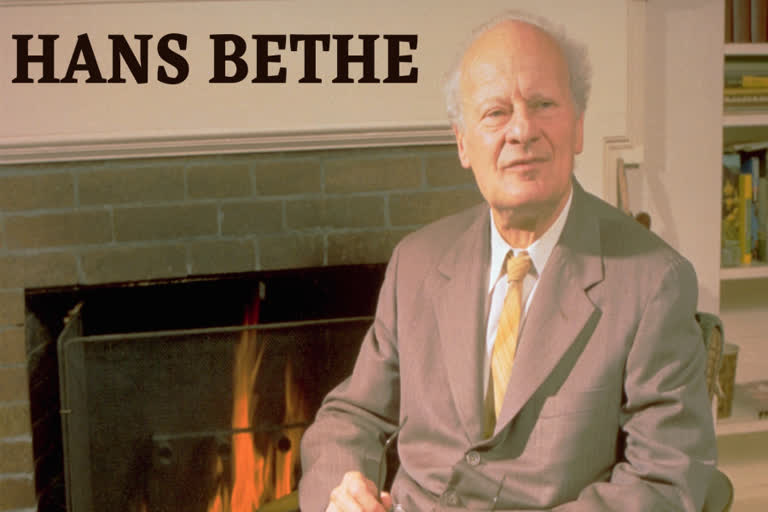Full Name: Born on2nd July 1906, in Strasbourg, Alsace-Lorraine,Hans Albrecht Bethe was a German-American nuclear physicist and winner of the 1967 Nobel Prize in Physics.
From 1924 to 1926, Bethe studied at the University of Frankfurt. In 1928 he studied at Munich and obtained his PhD in theoretical physics with Professor Arnold Sommerfeld. Hans Bethe also became a Privatdozent at the University of Munich from 1930 to 1933.
He was an Acting Assistant Professor at the University of Tubingen in 1932. Hans Bethe lost the position due to the advent of the Nazi regime in Germany.
After becoming an American citizen and gaining his security clearance, war work took him to the Radiation Laboratory at MIT, working on microwave radar. After spending the summer of 1942 at the University of California, Berkeley working on a design for the atomic bomb, Bethe was selected by J. Robert Oppenheimer to lead the T (Theoretical) Division of Los Alamos. He and his wife Rose moved to Los Alamos in 1943. Their son, Henry, was born at Los Alamos.
As theory chief, Bethe oversaw and coordinated the work of the various theory groups working on creating a model for how neutrons diffuse through a critical mass, figuring out how to calculate the efficiency of nuclear explosions, determining critical masses and the limits of sub-critical ones, understanding how liquids and gases behaved in fractions of microseconds at immense temperatures and pressures and designing an initiator.
Bethe completed the theoretical work on the implosion method used in the Trinity test and the “Fat Man” weapon dropped on Nagasaki, which validated his results. He also studied the hydrodynamic aspects of implosion, the neutron initiator, and radiation propagation from an exploding atomic bomb.
Scientific Contributions
Bethe was a professor at Cornell for his entire career, except for two sabbatical leaves and his absence during World War II when he worked on the Manhattan Project. At the end of World War II, Bethe worked on the United States' development of the hydrogen bomb, although he was opposed to the weapon's development and hoped that he would show that the H-bomb was impossible to build.
